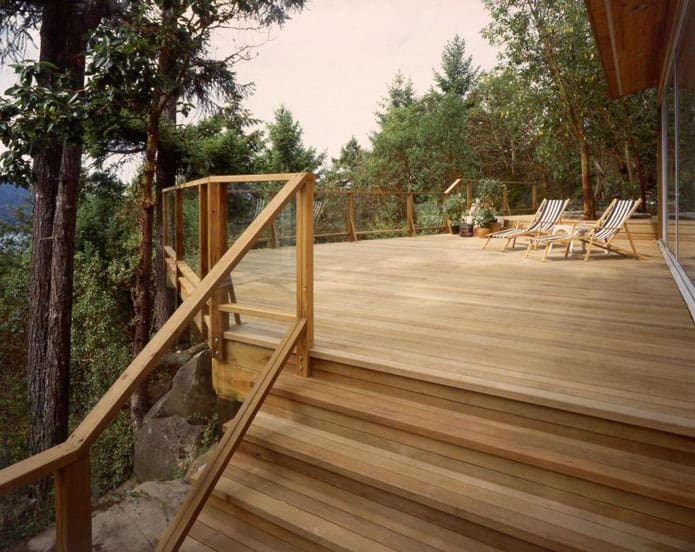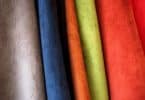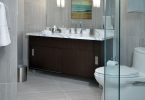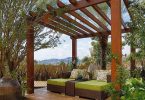
When it comes to building a new deck, or having one designed by a professional deck builder, one of the biggest decisions you’ll have to make it about which decking materials to use. In addition to thinking about pressure treated wood vs cedar decking materials, you can now consider opting for more exotic woods, or foregoing wood decking altogether. Composite decking materials and PVC decks have also become increasingly popular in recent years. Even aluminum can be used to create a long-lasting deck.
Here’s a look at some different decking materials available in Canada, to help you make a more informed decision about the option that may be right for your home.
Pressure Treated Decking
Pressure treated lumber has been the most popular choice among Canadian homeowners for over 60 years. This type of wood is known for being affordable, and readily available in most home improvement stores.
The process of pressure treating takes pine lumber(typically) and treats it with chemical preservatives to make it resistant to rot and insect damage. This makes the wood strong and long-lasting, in comparison with many other types of untreated lumber.
It’s important to note that pressure treated decking is prone to warping, swelling, and splitting. So, it’s essential to keep it well-maintained. Pressure treated decking needs to be pressure washed annually and stained every few years. Sanding is also a required part of maintaining PT decking.
Cedar Decking
Cedar is a western softwood that is naturally resistant to rot and insect damage. Homeowners who prefer wood decking, and can afford to opt for something other than PT decking often look to cedar as the preferred choice.
Cedar lumber is classified by grade. This means that you can find different levels of quality and different price points. The clearest cedar boards (those with no or minimal knots) are the most desirable (and most expensive), while the cedar decking boards with more knots tend to cost less.
Like pressure treating decking, cedar decking needs to be power washed yearly and treated every few years.
Exotic Decking
Some homeowners who love the look and feel of real wood decking, but would prefer something more durable than the standard options have been turning to exotic decking options. Native to South America, Asia, or Africa, exotic wood options such as Massaranduba, Ipe, and Tigerwood are a few of the exotic hardwoods that can be used to create a durable, beautiful deck.
These woods are extremely dense and naturally resistant to rot and insect damage. However, they can be quite expensive and should only be used by experienced builders, due to the fact that they can be hard to cut and drill.
“An ipe deck will be one of the strongest structures on your property. Its strength can be attributed to the natural oils and highly concentrated density levels contained in the wood. This combination is what will make your ipe wood deck stand the test of time.” (Ipedecking.com)
When using exotic decking woods, always ensure that the materials are ethically sourced.
Composite Decking
While natural wood decks remain the #1 choice of homeowners in Canada, composite decking is considered to be the fastest growing corner of the decking market today.
Composite decking is comprised of wood fibres and recycled plastic, covered in a protective cap or shell. The result is a product that provides the look of a natural wood deck, but without all of the maintenance. It is splinter free, and won’t warp, rot, or split.
Many homeowners and deck design professionals also view composite as a more environmentally friendly decking option.
“Composite decking provides the look and feel of real wood, but without the negative environmental impact. The entire Trex decking portfolio, for example, is made using more than 95 percent recycled content, including reclaimed industrial wood scraps and recycled plastic from common items such as shopping bags, newspaper sleeves and shrink wrap.” (Trex.com)
Composite decking should be swept occasionally and some brands should be occasionally checked for mold and mildew in damp, shady spots.
PVC Decking
PVC decking is 100% manmade, often from recycled materials. PVC decking is a low maintenance option that offers many of the same benefits of composite. It is available in several different wood-like colour options. Although some homeowners have found that it doesn’t look as much like wood decking as composite does.
PVC decking has superior scratch resistance and tends not to feel as hot under foot as other options may.
Aluminum Decking
Touted as the ultimate low-maintenance, environmentally positive decking option, aluminum is a decking material that most people probably don’t consider. This option is ultra-low maintenance and long-lasting. It’s non-skid, water resistant and remains cool to the touch on hot days. It’s also recyclable.
Aesthetically speaking, aluminum decking can lend a sleek, high-end appearance to your home’s exterior. Although, this option isn’t exactly for the budget-minded.
“Aluminum is among the most expensive ways to build your deck. But the payoff is a beautiful deck that will never twist, splinter, rot, mildew, shrink, become brittle or succumb to insects. It will truly outlast any other decking material.” (Craft-Bilt)
For more help choosing the right decking material for your new deck, contact a local decking contractor. They will be able to talk to you about pricing, maintenance requirements, and also about which materials are more readily available in your area.
Visit the deck builders category, here on eieihome.com, to find the professionals nearest you!
Article Republished with Permission, Originally Posted at eieiHome. Visit eieiHome to find the quality home contractors and home service professionals in your area.
Latest posts by Canadian Home Trends (see all)
- Layer Up – Wrap Your Bathroom In Light - December 12, 2025
- The Power of Rest: Elevate Your Wellness with Better Sleep - December 12, 2025
- VERSATILE KITCHEN DESIGN - December 12, 2025






